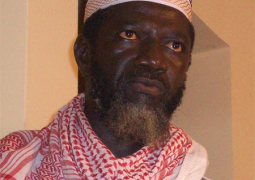
The procedures differ according to the ethnic group. They include removal of the clitoral hood and clitoral glands, removal of the inner labia, and in the most severe form (known as infibulations) removal of the inner and outer labia and closure of the vulva. In this last procedure, a small hole is left for the passage of urine and menstrual fluid; the vagina is opened for intercourse and opened further for childbirth. Health effects depend on the procedure, but can include recurrent infections, chronic pain, cysts, an inability to get pregnant, complications during childbirth, and fatal bleeding.(10) There are no known health benefits.
The practice is rooted in gender inequality, attempts to control women’s, and ideas about purity, modesty and aesthetics. It is usually initiated and carried out by women, who see it as a source of honour and fear that failing to have their daughters and granddaughters cut will expose the girls to social exclusion. Over 130 million women and girls have experienced FGM in the 29 countries in which it is concentrated. The United Nations Population Fund estimates that 20 percent of affected women have been infibulated, a practice found largely in northeast Africa, particularly Djibouti, Eritrea, Somalia and northern Sudan.
FGM has been outlawed or restricted in most of the countries in which it occurs, but the laws are poorly enforced.There have been international efforts since the 1970s to persuade practitioners to abandon it, and in 2012 the United Nations General Assembly, recognizing FGM as a human-rights violation, voted unanimously to intensify those efforts.(17) The opposition is not without its critics, particularly among anthropologists.
Local terms
The many variants of FGM are reflected in dozens of local terms in countries where it is common. These often refer to purification. A common Arabic term for purification has the root t-h-r, used for male and female circumcision (tahur and tahare). In Islamic texts the practice is referred to as khafd. In the Bambara language, spoken mostly in Mali, FGM is known as bolokoli (washing your hands) and in the lgbo language in eastern Nigeria as isa aru or iwu aru (having your bath – as in a young woman must have her bath before she has a baby).
Sunna circumcision usually refers to clitoridectomy, but is also used for the more severe forms; sunna means “path or way” in Arabic and refers to the tradition of Muhammad, although none of the procedures are required within Islam.The terminfibulation derives from fibula, Latin for clasp; the Ancient Romans reportedly fastened clasps through the foreskins or labia of slaves to prevent sexual intercourse.(32) The surgical infibulations of women came to be known as “pharaonic circumcision” in Sudan, but as “Sudanese circumcision” in Egypt.(32) In Somalia it is known simply as qodob (“to sew up”).(33)
Circumcisers, methods
Anatomy of the vulva, showing theclitoral glans, clitoral crura, corpora cavernosa and vestibular bulbs
The procedures are generally performed by a traditional circumciser in the girls’ homes, with or without anaesthesia. The circumciser is usually an older woman, but in communities where the male barber has assumed the role of health worker he will perform FGM too.Health professionals are often involved in Egypt, Sudan and Kenya; according to a 2008 survey in Egypt, 77 percent of FGM procedures there were performed by medical professionals, often physicians.
When traditional circumcisers are involved, non-sterile cutting devices are likely to be used, including knives, razors, scissors, glass, sharpened rocks and fingernails. A nurse in Uganda, quoted in 2007 in The Lancet, said that a circumciser would use one knife to cut up to 30 girls at a time.(38) Depending on the involvement of healthcare professionals, the procedures may include a local or general, or neither. Women in Egypt reported in 1995 that a local anaesthetic had been used on their daughters in 60 percent of cases, a general in 13 percent and neither in 25 percent.
Classification
Typologies
The WHO, UNICEF and UNFPA issued a joint statement in April 1997 defining FGM as “all procedures involving partial or total removal of the external female genitalia or other injury to the female genital organs whether for cultural or other non-therapeutic reasons.
The procedures vary considerably according to ethnicity and individual practitioners. During a 1998 survey in Niger, women responded with over 50 different terms when asked what was done to them.(26) Translation problems are compounded by the women’s confusion over which type of FGM they experienced, or even whether they experienced it. Several studies suggest survey responses are unreliable. A 2003 study in Ghana found that in 1995 four percent said they had not undergone FGM, but in 2000 said they had, while 11 percent switched in the other direction. In Tanzania in 2005, 66 percent reported FGM, but a medical exam found that 73 percent had undergone it.
Standard questionnaires ask women whether they have undergone the following: (1) cut, no flesh removed (pricking or symbolic circumcision); (2) cut, some flesh removed; (3) sewn closed; and (4) type not determined/unsure/doesn’t knows. The most common procedures fall within the “cut, some flesh removed” category, and involve complete or partial removal of the clitoral glands.
WHO Types I-II
The WHO has created a more detailed typology, Types I-III, based on how much tissue is removed; Type III is “sewn closed.” Type IV describes symbolic circumcision and miscellaneous procedures.(45)
Type I is subdivided into Ia, removal of the clitoral hood (rarely performed alone),(n 7) and the more common Ib (clitoridectomy), the complete or partial removal of the clitoral glans and clitoral hood.(When discussing FGM, the WHO uses clitoris to refer to the clitoral glans, the visible tip of the clitoris.)(48)Susan Izett and Nahid Toubia write: “(T) he clitoris is held between the thumb and index finger, pulled out and amputated with one stroke of a sharp object.”(49)
Type II (excision) is the complete or partial removal of the inner labia, with or without removal of the clitoral glans and outer labia. Type IIa is removal of the inner labia; IIb, removal of the clitoral glans and inner labia; and IIc, removal of the clitoral glans, inner and outer labia. Excision in French can refer to any form of FGM.
Type III
Type III (infibulation or pharaonic circumcision), the “sewn closed” category, involves the removal of the external genitalia and fusion of the wound. The inner and/or outer labia are cut away, with or without removal of the clitoral glans. Type IIIa is the removal and closure of the inner labia and IIIb the outer labia.(n 8( The practice is found largely in Djibouti, Eritrea, Ethiopia, Somalia and Sudan (though not South Sudan) in northeast Africa. Estimates of numbers vary: according to one in 2008, over eight million women in Africa have experienced it.According to UNFPA in 2010, 20 percent of women with FGM have been infibulated.
Type IV
The WHO defines Type IV as “(a)ll other harmful procedures to the female genitalia for non-medical purposes,” including pricking, piercing, incising, scraping and cauterization.(1) It includes nicking of the clitoris (symbolic circumcision), burning or scarring the genitals, and introducing substances into the vagina to tighten it.(64) Labia stretching is also categorized as Type IV. Common in southern and eastern Africa, the practice is supposed to enhance sexual pleasure for the man and add to the sense of a woman as a closed space. From the age of eight, girls are encouraged to stretch their inner labia using sticks and massage. Girls in Uganda are told they may have difficulty giving birth without stretched labia.
A definition of FGM from the WHO in 1995 included gishiri cutting and angurya cutting, found in Nigeria and Niger. These were removed from the WHO’s 2008 definition because of insufficient information about prevalence and consequences. Gishiri cutting involves cutting the vagina’s front or back wall with a blade or penknife, performed in response to infertility, obstructed labour and several other conditions. Over 30 percent of women with gishiri cuts in a study by Nigerian physician Mairo Usman Mandara had vesicovaginal fistulae. Angurya cutting is excision of the hymen, usually performed seven days after birth.
Complications
Short-term and late
FGM harms women’s physical and emotional health throughout their lives.(70)(71) It has no known health benefits.(11) The short-term and latecomplications depend on the type of FGM, whether the practitioner had medical training, and whether she used antibiotics and unsterilized or surgical single-use instruments. In the case of Type III, other factors include how small a hole was left for the passage of urine and menstrual blood, whether surgical thread was used instead of agave or acacia thorns, and whether the procedure was performed more than once (for example, to close an opening regarded as too wide or re-open one too small).(10)
Common short-term complications include swelling, excessive bleeding, pain, urine retention and healing problems/wound infection. A 2015 systematic review of 56 studies that recorded immediate complications suggested that each of these occurred in more than one in ten girls and women undergoing any form of FGM, including symbolic nicking of the clitoris (Type IV), although the risks increased with Type III. The review also suggested that there was under-reporting. (72) Other short-term complications include fatal bleeding, anaemia, urinary infection, septicaemia, tetanus, gangrene, necrotizing fasciitis (flesh-eating disease) and endometritis. It is not known how many girls and women die as a result of the practice, because complications may not be recognized or reported. The practitioners’ use of shared instruments is thought to aid the transmission of hepatitis B, hepatitis C and HIV, although no epidemiological studies have shown this.
Late complications vary depending on the type of FGM. They include the formation of scars and keloids that lead tostrictures and obstruction, epidermoid cysts that may become infected, and neuroma formation (growth of nerve tissue) involving nerves that supplied the clitoris.
An infibulated girl may be left with an opening as small as 2-3 mm, which can cause prolonged, drop-by-drop urination, pain while urinating, and a feeling of needing to urinate all the time. Urine may collect underneath the scar, leaving the area under the skin constantly wet, which can lead to infection and the formation of small stones. The opening is larger in women who are sexually active or have given birth by vaginal delivery, but the urethra opening may still be obstructed by scar tissue. Vesicovaginal or rectovaginal fistulae can develop (holes that allow urine or faeces to seep into the vagina This and other damage to the urethra and bladder can lead to infections and incontinence, pain during sexual intercourse and infertility.(76)
Painful periods are common because of the obstruction to the menstrual flow, and blood can stagnate in the vagina and uterus. Complete obstruction of the vagina can result in hematocolpos and hematometra (where the vagina and uterus fill with menstrual blood). The swelling of the abdomen that results from the collection of fluid, together with the lack of menstruation, can lead to suspicion of pregnancy. Physician Asma El Dareer reported in 1979 that a young girl in Sudan with this condition was killed by her family.
Age conducted
Age range
FGM is not invariably a rite of passage between childhood and adulthood, but is outperformed on much younger children.Girls are most commonly cut shortly after birth to age 15.In half the countries for which national figures were available in 2000-2010, most girls had been cut by age five. Over 80 percent (of those cut) are cut before that age in Nigeria, Mali, Eritrea, Ghana and Mauritania. The 1997 Demographic and Health Survey in Yemen found that 76 percent of girls had been cut within two weeks of birth.
The percentage is reversed in Somalia, Egypt, Chad and the Central African Republic, where over 80 percent (of those cut) are cut between five and 14.Just as the type of FGM is often linked to ethnicity, so is the mean age; in Kenya, for example, the Kisi cut around age 10 and the Kamba at 16.
For further information on FGM visit the WHO and UNICEF Web site, or email to azadehhassan@yahoo.co.uk, or text to Dr Azadeh on 0022o 7774 469/3774469
The FGM issue will continue next week on the outcome of pregnancy and childbirth women undergone FGM.
Author DR AZADEH Senior Lecturer at the University of the Gambia, senior Consultant in Obstetrics & Gynaecology , Clinical Director of Medicare Health Services



